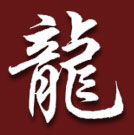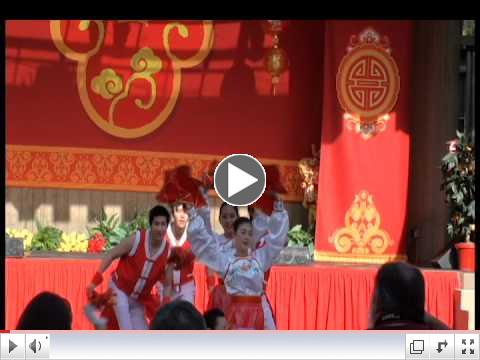|
|
|
STC Gazette
Happy Chinese New Year!
|
January 20, 2012
|
Greetings!
 On the arrival of the Chinese New Year, STC Management wishes You Great Prosperity! 在春節即將到來之際,STC資產管理祝願您萬事如意!
STC, also known as "Sung Tien Collaboration", aims to bring people together in synergistic ways so that the whole is the much more than the sum of its parts. "Sung Tien" is a Chinese saying for following the heavens. We believe that doing good naturally brings good outcomes, and through the process, we can have a positive impact on those around us. STC又名"順天聯合",旨在將獨立的人集合在一起從而獲得團結的力量,達到1+1>2的效果。"順天"意為順從天意。我們相信善有善報,而我們的與人為善能也夠對周圍環境產生正面的影響。 Our expertise and people-oriented philosophy have proven to be key in successfully connecting members of our community so that each can benefit from the others and ultimately promote the well-being of everyone. As a result, Sung Tien Collaboration has swelled in numbers. We would like to take this opportunity to introduce two of our important STC Families: Dance Impressions Productions and The Institute of Chinese Martial Arts.
我們有的不只是專業技術,我們用以人為本的理念與對生命積極的態度也影響了我們周遭的朋友,改善我們的社區及環境。 順天聯合已經吸收了與我們志同道合的朋友和組織加入STC大家庭。這一期我們會為您介紹我們的兩個成員:舞印舞蹈中心和中華武術學院。 Again, thank you for supporting STC Management. Good Luck in the Year of the Dragon! 最後再次感謝您對STC的支持,祝願您龍年大吉! Sincerely,
STC Team 團隊
|
|
STC News
 |
CCIM Trip to China
CCIM中國之行
As the China Liaison of CCIM (Certified Commercial Investment Member), John Hsu, STC Officer, visited China with Frank Simpson, CCIM Institute President. They forged ties with officials from top universities and partner institutions in Beijing and Shanghai to advance the goal of making available to more Chinese investors the vast resources of CCIM - commercial real estate education, technology and a global network.
Throughout the next two years, John will represent CCIM in strengthening its relationship with China. He is committed to providing sophisticated training programs to Chinese investors and setting up platforms for greater communication between U.S. and China.
John hopes that through his efforts, Chinese professionals will not only build up a stronger foundation of commercial real estate, but will also gain more confidence in stepping outside of China. Beyond just real estate investment, John is confident that Chinese businesses can integrate into the mainstream anywhere in the world.
 | Frank Simpson and John Hsu attending the CCIM Pinning Ceremony in Shanghai, China
Frank Simpson 和 John 許出席中國區CCIM畢業典禮 |
作為CCIM中國區的聯絡官,STC資產管理的執行長John 許和CCIM全球主席Frank Simpson一起前往中國進行了考察和交流。他們走訪了北京和上海的頂尖大學和合作機構,為未來向中國商業地產投資市場輸送CCIM的教育、技術和人脈資源奠定了基礎。
在未來的兩年里,John將代表CCIM總部加強與中國的聯繫,致力於為中國的商業地產投資者提供專業的教育培訓,為中美兩國商業地產界建立良好的交流平台,互惠互利。
John希望通過他的努力,中國的投資者不僅能夠建立更堅實的商業地產業投資基礎,還能更有信心走出國門參與投資項目。除了地產投資,John也相信中國企業有能力在其他領域融入主流。
Establishing collaborations with national CRE trade associations, international brokerage firms, and reputable universities in China 與中國各主要商業地產組織與協會及頂尖大學結成聯盟
|
|
STC Associates
 |
|
Dance Impression Products
舞印舞蹈中心
 Use this section to describe your event in full. Be sure to tell your subscribers why the event is being held - offered annually, to benefit a particular cause, to celebrate, etc.Dance Impressions, Dance Impressions Productions & Lan Ling Dance Studio was founded in the autumn of 1994, under the artistic direction of Anne Ma. Dance Impressions & Lan Ling Dance Studio's aim is to promote the art of Chinese folk dance and motivate the younger generation to better understand Chinese heritage. Dance Impressions Productions focuses on entertainment performance art. Our dancers are trained in, but not limited to, Chinese classical dance, folk dance, martial arts, ballet, modern, jazz, and flexibility discipline. Dancers are inspired to be well rounded in every form of dance in the world of arts. Use this section to describe your event in full. Be sure to tell your subscribers why the event is being held - offered annually, to benefit a particular cause, to celebrate, etc.Dance Impressions, Dance Impressions Productions & Lan Ling Dance Studio was founded in the autumn of 1994, under the artistic direction of Anne Ma. Dance Impressions & Lan Ling Dance Studio's aim is to promote the art of Chinese folk dance and motivate the younger generation to better understand Chinese heritage. Dance Impressions Productions focuses on entertainment performance art. Our dancers are trained in, but not limited to, Chinese classical dance, folk dance, martial arts, ballet, modern, jazz, and flexibility discipline. Dancers are inspired to be well rounded in every form of dance in the world of arts.
舞印舞蹈中心,舞印製作暨蘭陵舞坊成立於1994年。創辦人兼藝術總監是來自台灣的馬淑芬老師。舞印舞蹈中心暨蘭陵舞坊以宣揚中華傳統文化為榮,藉以中國民族舞蹈發揚國粹,提昇大家對中國傳統及地方文化的凝聚力。舞印製作則為多元化演出團體,負責一切與娛樂事業相關的演出活動,例如演唱會或演藝事業等。舞者們
所學的包含了中國古典舞、民俗舞、武舞、芭蕾、現代、爵士及柔軟度的訓練等,使之能成為多方位的舞者,適應這多元化的舞蹈文化藝術界。



舞印舞蹈中心龍年春節迪士尼演出
為慶祝2012龍年春節,迪士尼特邀南加州舞印舞蹈中心暨舞印製作參與慶典,於春節前後兩周期間在南加州迪士尼主題樂園和頂級渡假旅館,作5天20場盛大演出。
舞印舞蹈中心暨舞印製作(以下簡稱舞印)成立於1994年。創辦人兼藝術總監是來自台灣的馬淑芬老師,學員則是來自各地的華裔子弟。舞團成立至今,參加過許多大大小小的公開演出和比賽,贏得多項殊榮,自1994年起,比賽所獲獎牌超過600面之多; 2011年特應中華民國退伍軍人協會之邀請返臺演出,參與中華民國建國百年慶典。於七、八月間在台巡迴公演大型舞蹈展「精彩一百舞動奇跡」兩周,促進東西文化交流,觀眾由北到南,佳評如潮。這也是洛杉磯僑界第一個民間舞蹈團體受臺灣政府單位邀請返台演出。更因2011年春節受美國加卅迪士尼樂園特邀做了24場大型演出,觀眾反應熱烈,持續至今,在各大社交網站詢問不斷,迪士尼應觀眾要求再度邀請舞印,參與龍年祭典;今年的演出更還結合了由STC資產管理公司總裁許惠欽先生帶領的工作團隊及由高家旺老師所帶領的中華武術學院共同參與;為此,迪士尼特闢黃金時段在熱門地點演出,盛況不容錯過。
 | DIP Disneyland 2011 Chinese New Year
舞印2011農曆年迪士尼演出 |
Contact: Anne Ma 馬淑芬
Artistic Director
(714) 914-9143
annesfma@yahoo.com.tw
danceimpressionsproductions@gmail.com
William Jaw 趙子昂
External Vice President
(949) 468-6680
evp.dip@gmail.com
Chun-Sheng Wang 王駿陞
Internal Vice President
(949) 205-9253
ivp.dip@gmail.com
|
|
STC Associates
 |
|
Institute of Chinese Martial Arts
中華武術學院

The Institute of Chinese Martial Arts was established in May 2010 by Master Jiawang Gao. Master Gao began martial arts training at the famed Shaolin Temple at the age of nine. He graduated from the Martial Arts Department of Wuhan Physical Education University and has achieved the status of national athlete and national referee in China.
Since its inception, the Institute of Chinese Martial Arts has embraced the philosophy of individualized teaching, whereby teaching is adjusted to fit individual students' needs. Under the guidance of Master Gao, students have attained numerous achievements.
At the 2011 International Martial Arts Competition in Los Angeles, students won 22 gold medals, 13 silver medals, and 11 bronze medals in individual and group competitions, including first place in the Adult Tai Chi Group competition. In addition, at the Tiger Claw Kungfu Competition in Northern California, students won four gold medals and two silver medals.
中華武術學院成立於2010年5月份。學院高家旺老師祖籍山東,自九歲開始在山東以及嵩山少林寺學習武術,於2005年畢業於武漢體育學院武術系。
中華武術學院自建校以來,始終本著:"以愛為源,因材施教"的理念來開展武術教學。自建校一年多來,學生的成績也十分突出。 2011年洛杉磯國際武術大賽中,學院共選派出29名學生參加太極拳以及武術套路的兩個項目比賽,並且獲得了集體項目成人組 "集體太極拳"冠軍、少年組"集體拳術"季軍、少兒組"集體拳術"季軍,在單項上共獲得了21枚金牌、13枚銀牌、以及9枚銅牌的好成績。另外學院代表隊一行17人於今年6月4日遠征北加州參加Tiger Claw's 功夫錦標賽。獲得四座冠軍獎杯、兩座亞軍獎杯,再次證明了學院學生的實力。
 | Introduction of Institute of Chinese Martial Arts
中華武術學院介紹 |
Contact: Helen Liu (626) 678-5480
|
 |
|
All about Chinese New Year
關於春節
Source: wikipedia
 Chinese New Year is the most important of the traditional Chinese holidays. In China, it is known as "Spring Festival," the literal translation of the Chinese name 春節, since the spring season in Chinese calendar starts with lichun, the first solar term in a Chinese calendar year. It marks the end of the winter season, analogous to the Western carnival. The festival begins on the first day of the first month (Chinese: 正月) in the traditional Chinese calendar and ends with Lantern Festival which is on the 15th day. Chinese New Year's Eve, a day where Chinese families gather for their annual reunion dinner, is known as Chú Xī (除夕) or "Eve of the Passing Year." Because the Chinese calendar is lunisolar, the Chinese New Year is often referred to as the "Lunar New Year". Chinese New Year is the most important of the traditional Chinese holidays. In China, it is known as "Spring Festival," the literal translation of the Chinese name 春節, since the spring season in Chinese calendar starts with lichun, the first solar term in a Chinese calendar year. It marks the end of the winter season, analogous to the Western carnival. The festival begins on the first day of the first month (Chinese: 正月) in the traditional Chinese calendar and ends with Lantern Festival which is on the 15th day. Chinese New Year's Eve, a day where Chinese families gather for their annual reunion dinner, is known as Chú Xī (除夕) or "Eve of the Passing Year." Because the Chinese calendar is lunisolar, the Chinese New Year is often referred to as the "Lunar New Year".
Chinese New Year is the longest and most important festivity in the Chinese calendar. The origin of Chinese New Year is itself centuries old and gains significance because of several myths and traditions. Chinese New Year is celebrated in countries and territories with significant Chinese populations, such as Mainland China, Hong Kong, Indonesia, Macau, Malaysia, Philippines, Singapore, Taiwan, Thailand, and also in Chinatowns elsewhere. Chinese New Year is considered a major holiday for the Chinese and has had influence on the lunar new year celebrations of its geographic neighbors. These include Koreans (Seollal), Bhutanese (Losar), and Vietnamese cultures.
Within China, regional customs and traditions concerning the celebration of the Chinese new year vary widely. People will pour out their money to buy presents, decoration, material, food, and clothing. It is also the tradition that every family thoroughly cleans the house to sweep away any ill-fortune in hopes to make way for good incoming luck. Windows and doors will be decorated with red color paper-cuts and couplets with popular themes of "good fortune" or "happiness", "wealth", and "longevity". On the Eve of Chinese New Year, supper is a feast with families. Food will include such items as pigs, ducks, chicken and sweet delicacies. The family will end the night with firecrackers. Early the next morning, children will greet their parents by wishing them a healthy and happy new year, and receive money in red paper envelopes. The Chinese New Year tradition is to reconcile, forget all grudges and sincerely wish peace and happiness for everyone.
Fun Facts:
Symbolism  As with all cultures, Chinese New Year traditions incorporate elements that are symbolic of deeper meaning. One common example of Chinese New Year symbolism is the red diamond-shaped fú characters (Chinese: 福, Cantonese and Hakka: Fook, literally "blessings, happiness"), which are displayed on the entrances of Chinese homes. This sign is usually seen hanging upside down, since the Chinese word 倒 "upside down", is homophonous or nearly homophonous with 到 "arrive" in all varieties of Chinese. Therefore, it symbolizes the arrival of luck, happiness, and prosperity.Red is the predominant colour used in New Year celebrations. Red is the emblem of joy, and this colour also symbolizes virtue, truth and sincerity. On the Chinese opera stage, a painted red face usually denotes a sacred or loyal personage and sometimes a great emperor. Candies, cakes, decorations and many things associated with the New Year and its ceremonies are coloured red. The sound of the Chinese word for "red" ( 紅) is "hong" in Mandarin (Hakka: Fung; Cantonese: Hoong) which also means "prosperous." Therefore, red is an auspicious colour and has an auspicious sound. As with all cultures, Chinese New Year traditions incorporate elements that are symbolic of deeper meaning. One common example of Chinese New Year symbolism is the red diamond-shaped fú characters (Chinese: 福, Cantonese and Hakka: Fook, literally "blessings, happiness"), which are displayed on the entrances of Chinese homes. This sign is usually seen hanging upside down, since the Chinese word 倒 "upside down", is homophonous or nearly homophonous with 到 "arrive" in all varieties of Chinese. Therefore, it symbolizes the arrival of luck, happiness, and prosperity.Red is the predominant colour used in New Year celebrations. Red is the emblem of joy, and this colour also symbolizes virtue, truth and sincerity. On the Chinese opera stage, a painted red face usually denotes a sacred or loyal personage and sometimes a great emperor. Candies, cakes, decorations and many things associated with the New Year and its ceremonies are coloured red. The sound of the Chinese word for "red" ( 紅) is "hong" in Mandarin (Hakka: Fung; Cantonese: Hoong) which also means "prosperous." Therefore, red is an auspicious colour and has an auspicious sound.
Fireworks
 Bamboo stems filled with gunpowder that were burnt to create small explosions were once used in ancient China to drive away evil spirits. In modern times, this method has eventually evolved into the use of firecrackers during the festive season. Firecrackers are usually strung on a long fused string so it can be hung down. Each firecracker is rolled up in red papers, as red is auspicious, with gunpowder in its core. Once ignited, the firecracker lets out a loud popping noise and, as they are usually strung together by the hundreds, the firecrackers are known for their deafening explosions that are thought to scare away evil spirits. See also Myths above. The burning of firecrackers also signifies a joyful time of year and has become an integral aspect of Chinese New Year celebrations. Bamboo stems filled with gunpowder that were burnt to create small explosions were once used in ancient China to drive away evil spirits. In modern times, this method has eventually evolved into the use of firecrackers during the festive season. Firecrackers are usually strung on a long fused string so it can be hung down. Each firecracker is rolled up in red papers, as red is auspicious, with gunpowder in its core. Once ignited, the firecracker lets out a loud popping noise and, as they are usually strung together by the hundreds, the firecrackers are known for their deafening explosions that are thought to scare away evil spirits. See also Myths above. The burning of firecrackers also signifies a joyful time of year and has become an integral aspect of Chinese New Year celebrations.
Food  A reunion dinner is held on New Year's Eve where members of the family gather for the celebration. The venue will usually be in or near the home of the most senior member of the family. The New Year's Eve dinner is very sumptuous and traditionally includes chicken and fish. In some areas, fish (simplified Chinese: 鱼; traditional Chinese: 魚; pinyin: yú) is included, but not eaten completely (and the remainder is stored overnight), as the Chinese phrase "may there be surpluses every year" (simplified Chinese: 年年有余; traditional Chinese: 年年有餘; pinyin: nián nián yǒu yú) sounds the same as "may there be fish every year." A reunion dinner is held on New Year's Eve where members of the family gather for the celebration. The venue will usually be in or near the home of the most senior member of the family. The New Year's Eve dinner is very sumptuous and traditionally includes chicken and fish. In some areas, fish (simplified Chinese: 鱼; traditional Chinese: 魚; pinyin: yú) is included, but not eaten completely (and the remainder is stored overnight), as the Chinese phrase "may there be surpluses every year" (simplified Chinese: 年年有余; traditional Chinese: 年年有餘; pinyin: nián nián yǒu yú) sounds the same as "may there be fish every year."
Red envelopes
 Traditionally, Red envelopes or red packets (Cantonese: lai sze or lai see) (利是, 利市 or 利事); (Mandarin: 'hóng bāo' (红包); Hokkien: 'ang pow' (POJ: âng-pau); Hakka: 'fung bao'; are passed out during the Chinese New Year's celebrations, from married couples or the elderly to unmarried juniors. It is also common for adults or young couples to give red packets to children. Red packets are also known as 壓歲錢/压岁钱 (Ya Sui Qian, which was evolved from 壓祟錢/压祟钱, literally, the money used to suppress or put down the evil spirit ) during this period. Traditionally, Red envelopes or red packets (Cantonese: lai sze or lai see) (利是, 利市 or 利事); (Mandarin: 'hóng bāo' (红包); Hokkien: 'ang pow' (POJ: âng-pau); Hakka: 'fung bao'; are passed out during the Chinese New Year's celebrations, from married couples or the elderly to unmarried juniors. It is also common for adults or young couples to give red packets to children. Red packets are also known as 壓歲錢/压岁钱 (Ya Sui Qian, which was evolved from 壓祟錢/压祟钱, literally, the money used to suppress or put down the evil spirit ) during this period.
Red packets almost always contain money, usually varying from a couple of dollars to several hundred. Per custom, the amount of money in the red packets should be of even numbers, as odd numbers are associated with cash given during funerals (帛金: Bai Jin). The number 8 is considered lucky (for its homophone for "wealth"), and $8 is commonly found in the red envelopes in the US. The number six (六, liù) is also very lucky as it sounds like 'smooth' (流, liú), in the sense of having a smooth year. Sometimes chocolate coins are found in the red packets.
Learn more
|
 |
About Us
STC Management is an official wholesale loan broker for Wells Fargo Financial, and is now more equipped than ever to serve our community's real estate needs. This designation allows for STC to offer more competitive rates than traditional lenders, and more importantly, cater to the unique needs of our diverse and highly demanding clients. During these difficult times, STC will present clients with valuable counsel on credit issues, provide access to the loans most suitable for their needs, and negotiate the best terms possible for its borrowers.
As both real estate experts and members of the community, STC Management strives to educate its valued clients and prepare them with the best advantage possible in today's economy. As an Accredited Management Organization (AMO), we create value for clients through a combination of managing, leasing and brokering real estate investments. Our affiliations include CCIM, ICSC, AIR, IREM, AOA, MRMLS, NAR, CoStar, LoopNet, CAR, etc. Together, our network provides us with the opportunities and resources necessary in promoting creative and valuable solutions for clients. STC 資產管理是富國銀行官方的批發住宅貸款經紀公司,現在比以往任何時候都更具備為我們社區的房地產需求服務的能力。這一身份使我們能夠提供相比傳統貸款方更 有競爭力的利率,並且更重要的是能夠滿足我們多樣化和高要求的客戶的獨特需求。在現在這樣的困難時期,STC會為客戶呈遞信用問題上的寶貴建議,提供更能 迎合他們需求的的貸款途徑,並且協商適用於借款人的最佳條款。 身 兼房地產專家和社區成員的雙重身份,STC資產管理致力於指導其尊貴的客戶使他們以最佳的條件應對當今的經濟形勢。作為一家經認證的管理組織(AMO), 我們通過資產管理,租賃計畫和房地產投資策略的管理組合為客戶創造價值。我們的指定認證背景包栝:國際註冊商業地產投資師CCIM, 國際購物中心理事會ICSC,美國工業地產協會成員AIR,國際資產管理協會IREM,公寓業主協會AOA,全國房地產經紀人協會NAR,加州房地產經紀 人協會CAR,Loopnet, CoStar, MRMLS等網絡。 我們的網絡為我們提供的機遇和必要的資源,從而為客戶推出新穎和有價值的解決方案。
www.stcmanagement.com
|
|
|
|
|